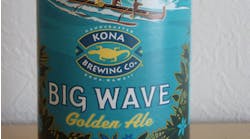We don’t deal with the subject of green or sustainability all that often, but we’re certainly giving you a double-dose this month.
In addition to our cover story on Leaders in Sustainability – which looks at sustainability through the eyes of four food companies – we also reveal our Green Plant of the Year. ConAgra’s Lamb Weston sweet potato processing plant in Delhi, La., is the first frozen food manufacturing facility in the world to achieve Leadership in Energy & Environmental Design (LEED) Platinum certification from the U.S. Green Building Council.
Each of those stories has smaller sidebar stories within, and they all point to the same thing: that being green is not enough, that an Earth-friendly plant also has to create its own economic viability and contribute to that of its parent corporation. Otherwise, you may wind up like Contessa Premium Foods (ironically, one of our Green Plant of the Year nominees last year) or Tasty Baking, which built green plants that did not provide the expected return on investment. Those companies went into bankruptcy, partially (to be fair, not entirely) due to those green plants.
Our coverage of sustainability in the food and beverage industry went far beyond the pages of our magazine. Click on the articles below to learn more about how food and beverage companies are building sustainable business practices into their bottom lines.
- Top Food and Beverage Companies: Leaders in Sustainability
- Food Processing Awards ConAgra/Lamb Weston 2011 Green Plant of the Year
- ConAgra Foods Offers Practical View of Sustainability
- Consumer Perception Of Sustainable Activity Improves For Food And Beverage Manufacturers
- Unilever Catapults To Top Of Sustainability Rankings
- Bank Saracin Reveals Sustainability Rankings for Food and Beverage Manufacturers
- Odwalla Transitions to 100% Plant-Based Bottles
- MillerCoors Brews Up Sustainable Savings
- Business Leaders Weigh In On Sustainability
- Food Processors Make Progress on Sustainability Goals in 2011
- Benchmarking Study Finds Food Processors Average Six Sustainability Goals
- Coca-Cola Canada Shines A Light On Efficient Lighting
This new definition of sustainability is widespread. “The triple bottom line” is a phrase heard often these days; it means achieving sustainability in environmental, social and economic ways. I’ve also heard it referred to as ESG – economic, social and governance. Despite what rocker Meat Loaf wrote in 1977: Two out of three isn’t good enough.
“Sustainability issues and financial performance have begun to intertwine,” reads a report, “How sustainability has expanded the CFO’s role,” from accounting and advisory firm Ernst & Young. “CFOs are getting involved in the management, measurement and reporting of the companies’ sustainability activities. This involvement has expanded the CFO’s role in ways that would have been hard to imagine even a few years ago.”
“The changes stem partly from a realization by institutional investors that climate change and sustainability issues often bear directly on companies’ risk profiles, their reputations and their financial performance,” the report continues. “CFOs and other market-facing executives will need to become more familiar with their companies’ most vital ESG issues. They’ll also need to prepare for hard questions from stakeholders and to demonstrate a heightened commitment to ESG performance.”
They certainly have to. Equity analysts are getting interested in this score, independent third-parties are publicizing their ratings of companies and watchdog groups are vigilantly rooting out any suspected “greenwashing.”
“In the 2011 proxy season, for example, approximately 40 percent of all shareholder proposals that were voted on focused on social/environmental issues – the largest category of all shareholder resolutions,” the Ernst & Young report continues.
Another way of looking at it: “As recently as 2005, less than 3 percent of all shareholder resolutions on social and environmental issues reached the critical support threshold of more than 30 percent of votes cast. By 2010, 26.8 percent had hit that level. This proxy season, it was 31.6 percent.”
And don’t forget consumers at large, those that aren’t your stockholders. I haven’t seen a good, recent report linking consumer purchasing habits to sustainable products or companies’ claims. I think consumers are backpedaling a bit on their love of green, especially with this recession holding on. But I do believe it’s at least one more reason shoppers may buy your product. And you want to give them all the reasons you can, right? So it couldn’t hurt.
The Ernst & Young report recommends four actions to CFOs on this issue, but they sound like good ideas for anyone involved in setting or enforcing or at least interested in your company’s sustainability efforts:
- Consider sustainability issues when contemplating significant capital expenditures.
- Evaluate the benefits of including sustainability information in annual financial reports.
- Push for transparency in the organization’s sustainability performance and consider obtaining third-party assurance for external reports.
Watch for inconsistencies in sustainability reporting – across communications channels and business units – to minimize the need for restatement.

